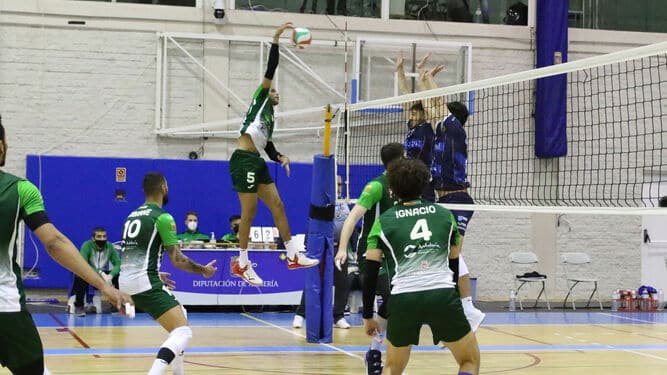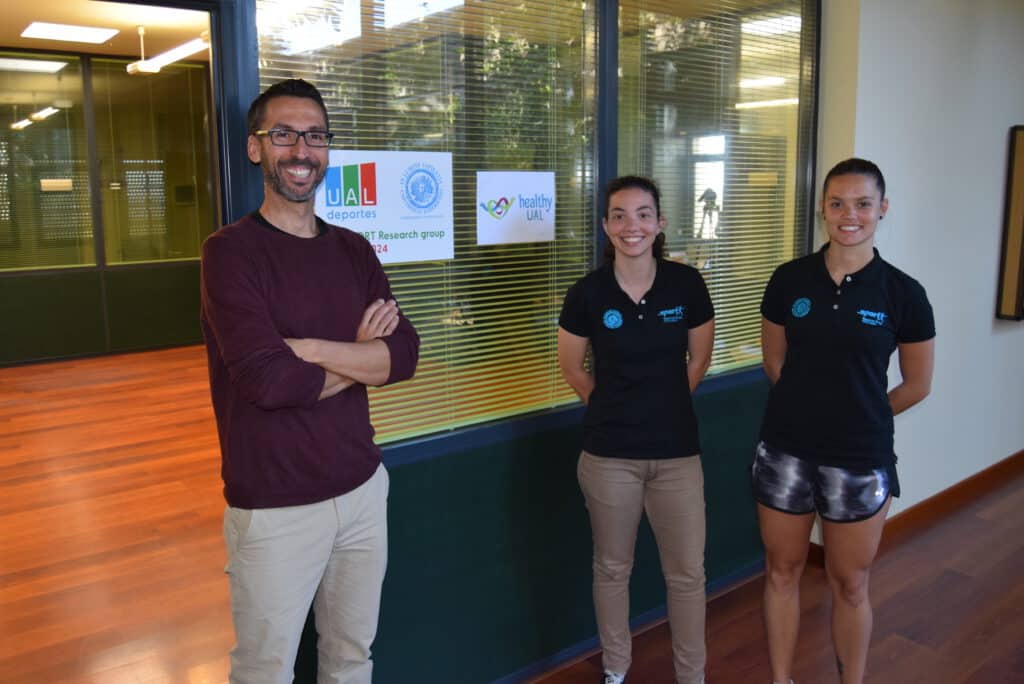Under the original title of 'The force-velocity profile as determinant of spike and serve ball speed in top-level male volleyball players', and achieving great international repercussions, a new novel research which will contribute a lot to volleyball. Being an extremely specific sport modality in its physical preparation, the results obtained offer very valuable information for the prescription and orientation of strength training in volleyball.
This has been indicated by the researchers Andres Baena-Raya, Alberto Soriano-Maldonado, Manuel Rodriguez-Perez and Antonio Garcia-de Alcarazmembers of the Research Group CTS-1024 'Sport Research Group', from the UAL, who have collaborated with Manuel Ortega-Becerraof the Universidad Pablo de Olavide, Pedro Jiménez-Reyesof the Universidad Rey Juan Carlos, and Amador García-Ramos of the University of Granada. Obviously, this research would not have been possible without the collaboration of an elite team like the Unicaja Costa de Almería Volleyball Club, leader of the SVM at the time and contender for a league title that it has already won eleven times.
This research has been published in the journal 'Plos One'. (http://www.t.ly/xoA1), with the aim of "examining the contribution of some mechanical and muscular properties obtained from the force-velocity profile, as determinants of serve and spike speed in elite male volleyball players", in order to "optimize the performance of these technical-tactical actions through specific training programs", according to the authors.
Andrés Baena-Raya, lead author of the paperThe study of the mechanical variables of the ball's exit speed is of great practical interest, given that "both the serve and the spike are decisive actions in the outcome of a match and require a quick approach run and vertical jump prior to hitting the ball".
The researchers evaluated the strength-speed profile of 22 elite male players during the jump, sprint and bench press, and used a radar device to measure the ball exit velocity in the serve and shot. The main findings of this study indicate that the maximum force (F0) in the vertical jump and the bench press, as well as the maximum velocity (V0) in sprinting, were strongly associated with the speed in the two key actions of the game.
In addition, the researchers determined that these mechanical variables accounted for "between 20% and 36% of the variability in serve and shot velocities".being especially influential in the serve". Thus, the present findings "recommend the use of exercises that emphasize the player's improvement in the ability to produce and apply force during the vertical jump and bench press throw, as well as the improvement of force application at high speed during the sprint".
In addition, according to Rodriguez-Perez, the results of this research "put into perspective the usefulness of assessing the force-velocity profile in these actions.The aim is to program training in an individualized and specific way in order to improve the most determinant mechanical variables of the serve and the spike in elite volleyball players".
These results belong to the doctoral thesis by Andrés Baena-Raya, entitled Influence of Force-Velocity Profile on Ballistic Performance'.directed by professors Alberto Soriano-Maldonado and Manuel Rodríguez-PérezThe relationship between the force-velocity profile and performance variables in different sports such as soccer and tennis (http://www.t.ly/l8AW) or basketball (http://www.t.ly/L3ep) is being analyzed.



